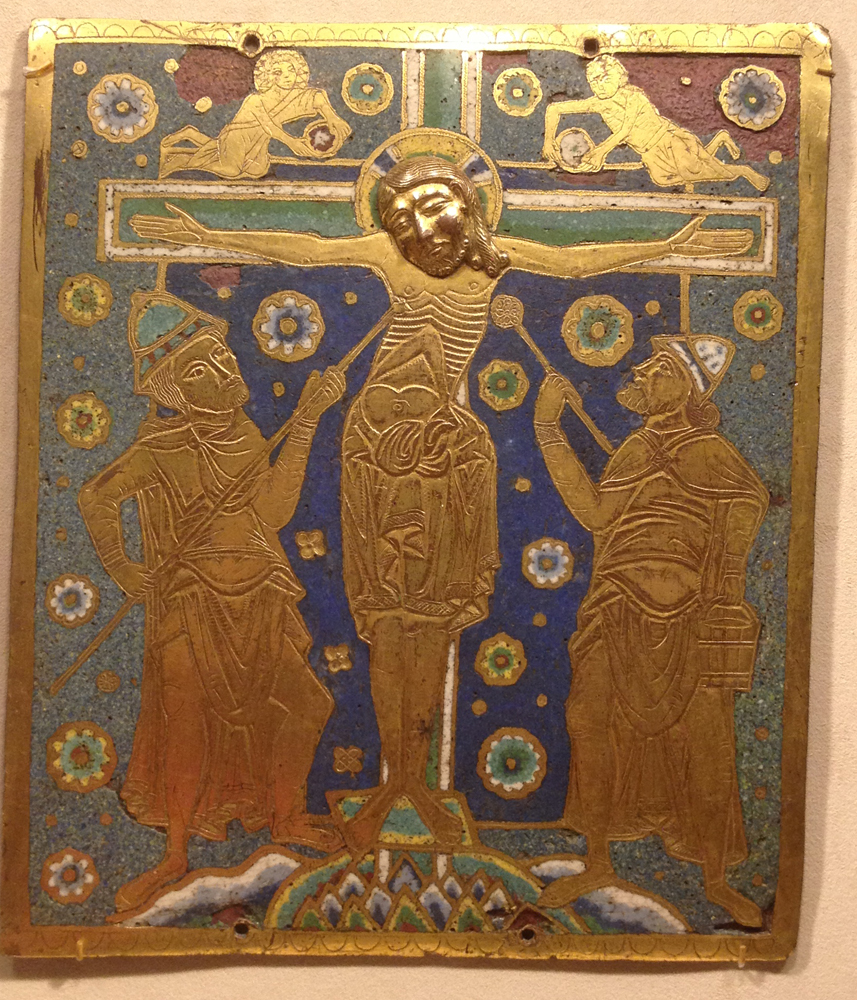
Plaque with the Crucifixion
Circa 1200
Champlevé enamel on gilded copper
German, possibly Westphalia
Metropolitan Museum of Art, Gift of J. P. Morgan, 17.190.448
This Crucifixion exemplifies a late stage in the transition from the triumphalism of such images in the first millenium to the pathos of high medieval works. Here the arms are still extended straight out like the gesture of welcome in the older works, but the head, the only part of the work that is raised above the flat surface, slumps onto the chest and the eyes are closed in death. The body forms an angle at the hips, and the colobium of old is now just a piece of cloth tied up into a sort of skirt.
Against this emotional effect, the rest of the composition expresses a calm and order that speak to Christ's divinity. The figures of Longinus and Stephaton and of the sun and moon above the cross form a stately, geometrically balanced pattern that relieves the pathos. Even the incisions outlining the ribs undulate softly.
View this page in full resolution.
Read more about images of the Crucifixion and of St. Longinus.
Photographed at the site by Richard Stracke, shared under Attribution-NonCommercial-ShareAlike license.